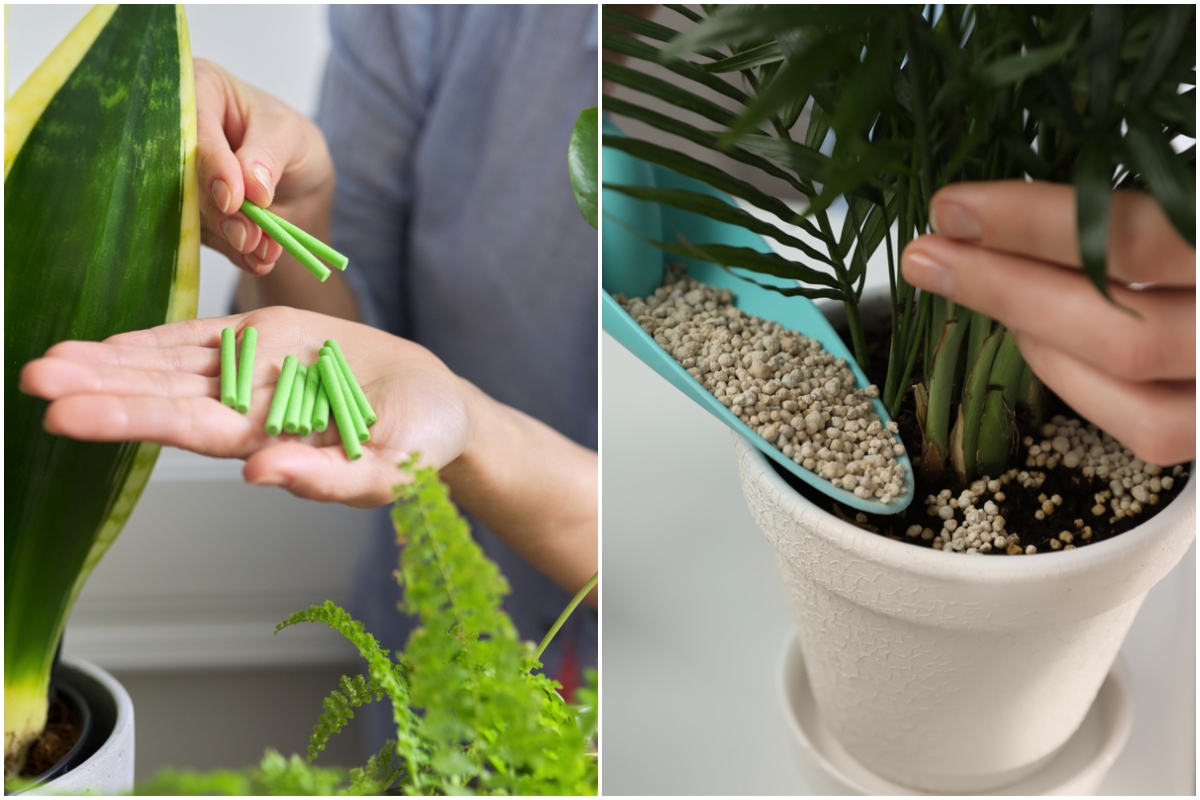
Whether you’re a newbie plant parent or you’ve started your plant-collecting journey years ago, you’re probably already familiar with the three factors you need to pay attention to for a happy plant: healthy soil, good light and an optimized watering schedule.
Depending on how many plants you’ve collected, the balancing act required to find the right mix for your plants can quickly turn into a chore.
And chores are better ignored, right? Especially in the summer, when the beautiful weather beckons us outdoors.
It just so happens that in the summer months your beloved houseplants might benefit from an extra element added to their care routine – fertilizing.
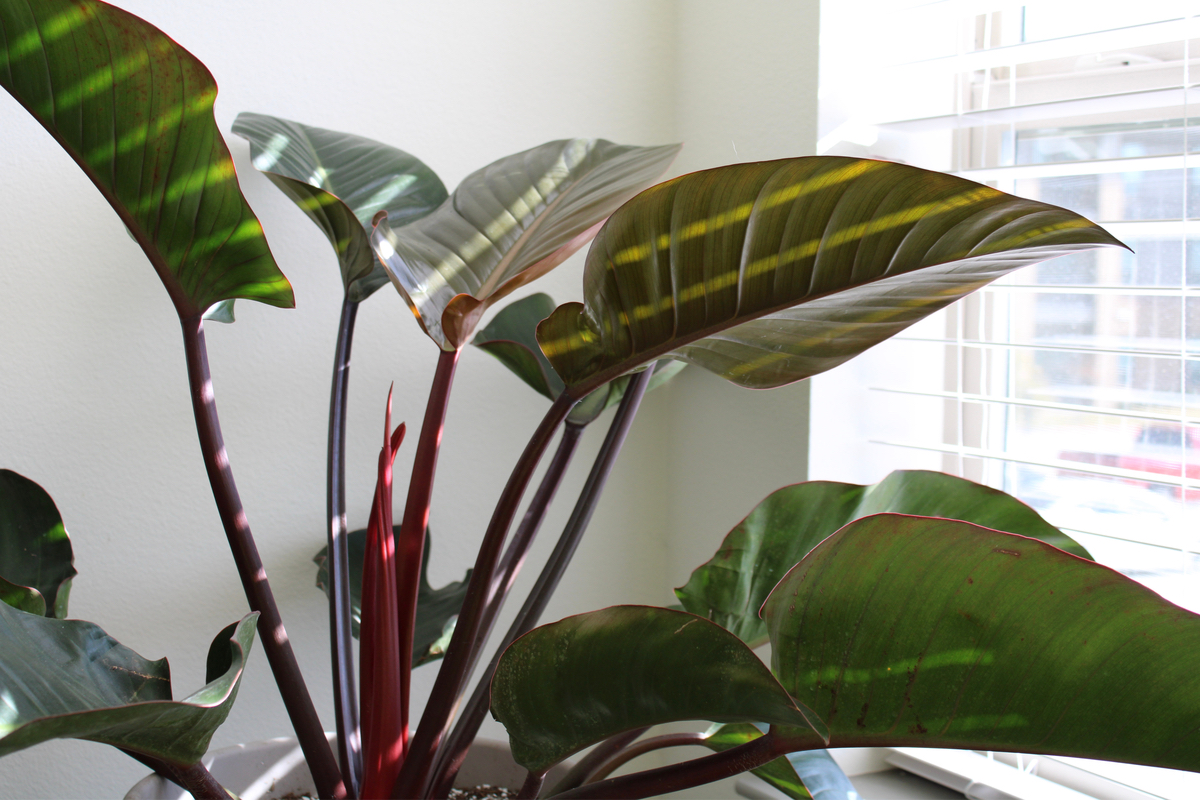
Why do I need to fertilize my houseplants?
Ok, “need” might be too strong a word. But fertilizing your houseplants is a good idea if you want to have healthy, lush, fast-growing plants.
“But nobody fertilizes houseplants in the wild,” is a common refrain I hear whenever I talk about more complex plant care issues. True, to an extent, but only because nature does the fertilizing.
Think about it.
Most plants we’ve commonly come to call houseplants are tropical plants. In their natural habitat, they’re fertilized by organic matter (such as leaves or animal droppings) that falls on the ground and decomposes over time with the help of naturally-occurring bacteria and fungi.
Can you honestly say that this process is replicated in your living room, where the plant spends its entire life in a pot on your shelf? I bet that’s not the case.
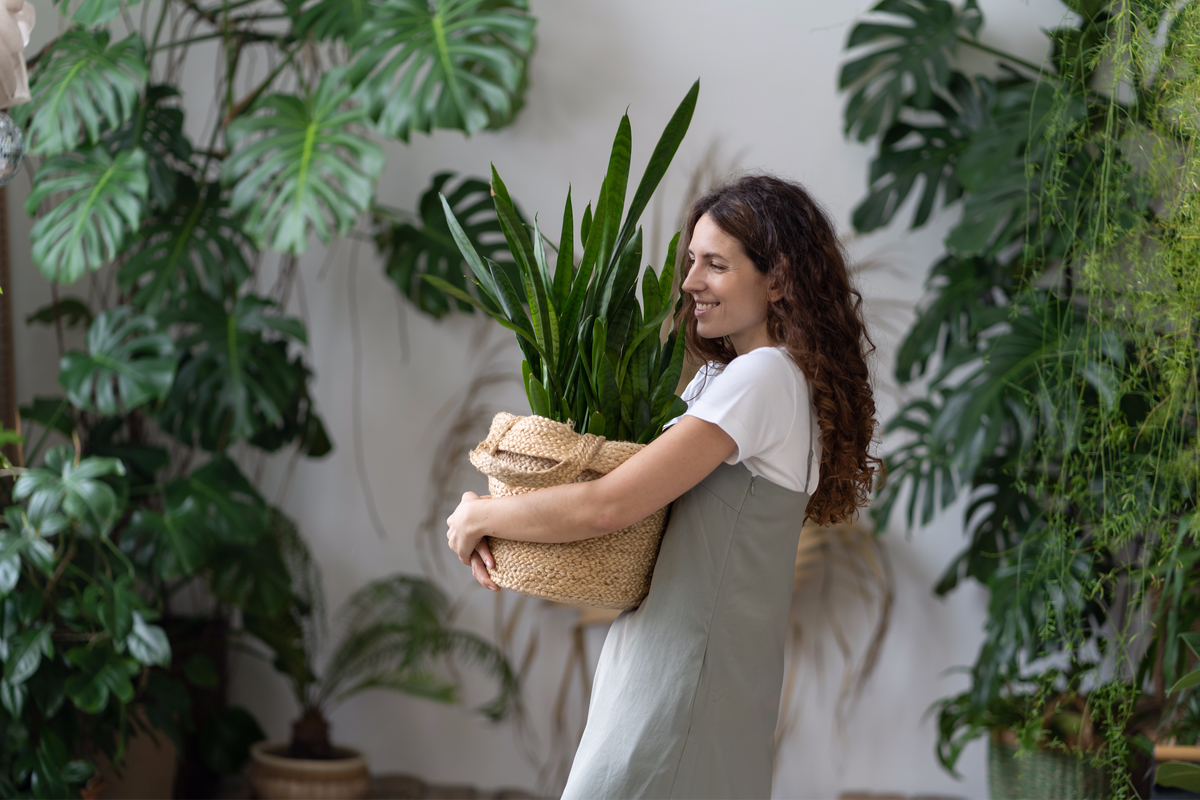
That’s why plants need a bit of help with the availability of the three essential nutrients they need in order to thrive: nitrogen (N), phosphorus (P) and potassium (K).
This is why you will see this symbol (N-P-K) on the packaging of every plant feed available in stores.
Sometimes, you’ll just see three digits, for example, 7-10-7, to indicate the percentage of each element contained in the mixture, by weight. So a 7-10-7 fertilizer will contain 7 percent nitrogen, 10 percent phosphorus and 7 percent potassium.
Most houseplants will be happy if fed a balanced mixture of 10-10-10, while other houseplants might prefer a mix with a higher nitrogen content (the first digit in the series). This is especially true for plants with large foliage, such as monstera.
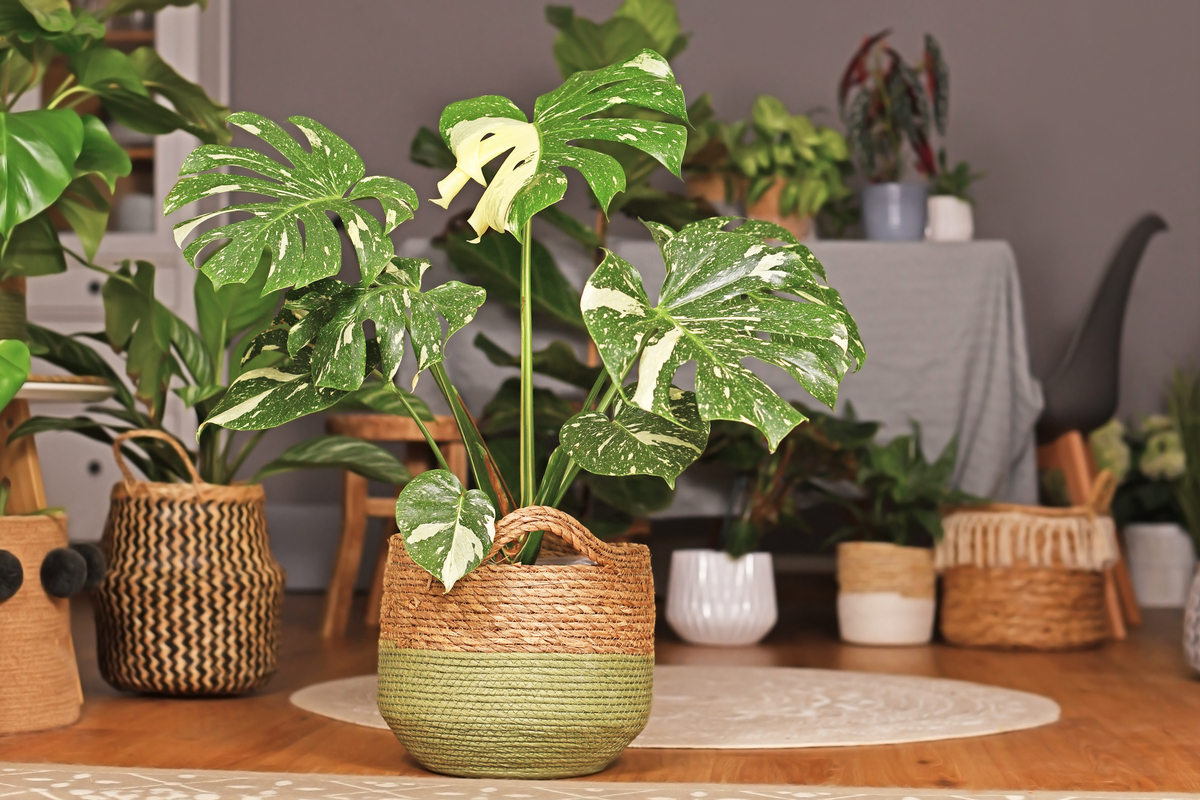
I know it may sound complicated (or boring) to learn about chemical elements when all you want to do is get new plants and watch them grow.
Here’s the simplified version:
Nitrogen is good for large healthy foliage. Plants such as monsteras, fiddle-leaf figs, ficuses or crotons will benefit from a fertilizer rich in nitrogen.
Phosphorus is essential for healthy flowers and fruit. Plants such as orchids, African violets and begonias benefit from a fertilizer with a higher P-number.
Potassium promotes overall healthy roots and growth. For most houseplants, the P-number will generally be equal to the other two numbers or slightly lower.
Should I use synthetic or organic houseplant fertilizer?
That’s your decision to make, but we’ll always recommend organic over synthetic fertilizer. Organic fertilizer has come a long way in terms of availability and price, and in some cases, it’s even more affordable than its synthetic counterpart.
You don’t have to make your own organic fertilizer; you can buy it at nearly every gardening center or order it online. Nowadays organic fertilizer is more commonly made out of fish, seaweed, manure, rock minerals, wood or bone meal.
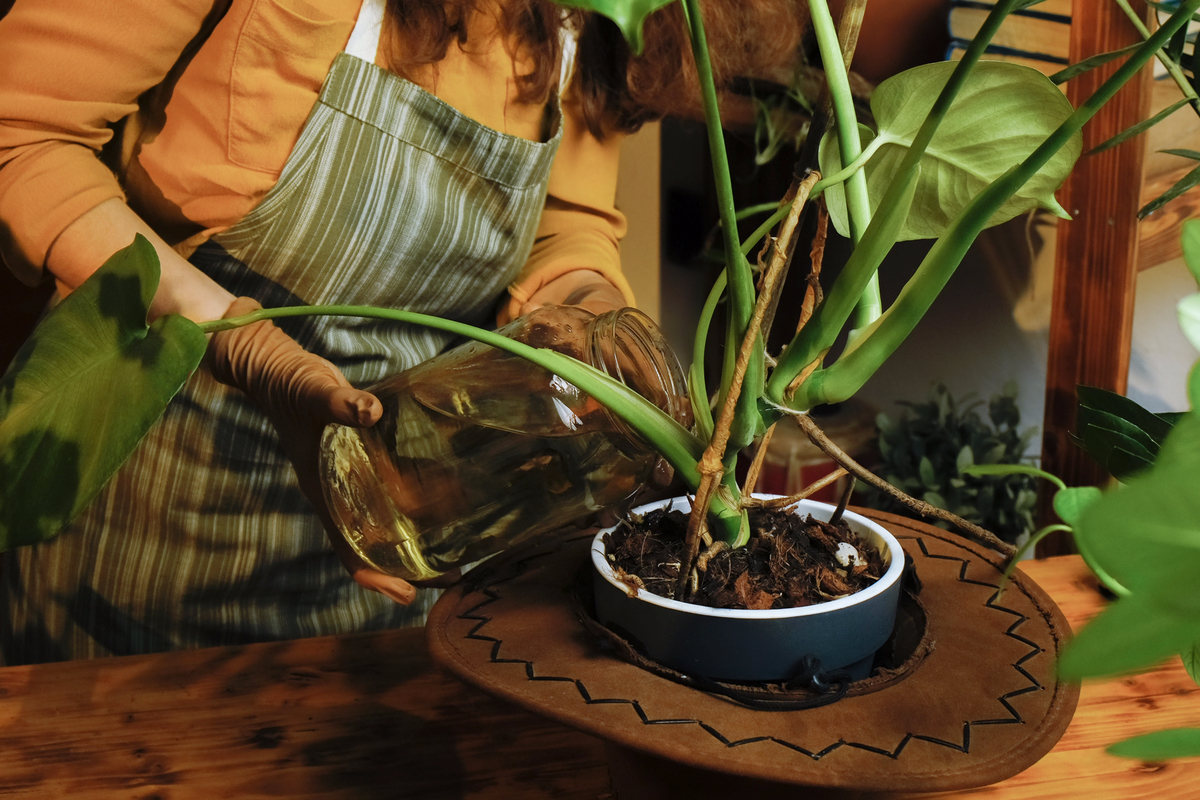
Synthetic fertilizers usually contain the main nutrients (NPK) and sometimes some micronutrients. Their advantage is that they act quickly to feed your plant, but it doesn’t actually enrich the soil. Inorganic feed drains from the soil as quickly as it is added. It may even contribute to a toxic buildup of salts if used in excess (more on this later).
And believe me, what constitutes excess is much less than what you’re estimating.
On the other hand, organic fertilizers are usually slow release and also contain other micronutrients, such as copper, zinc, boron, manganese, and iron – all necessary elements for healthy plant growth.
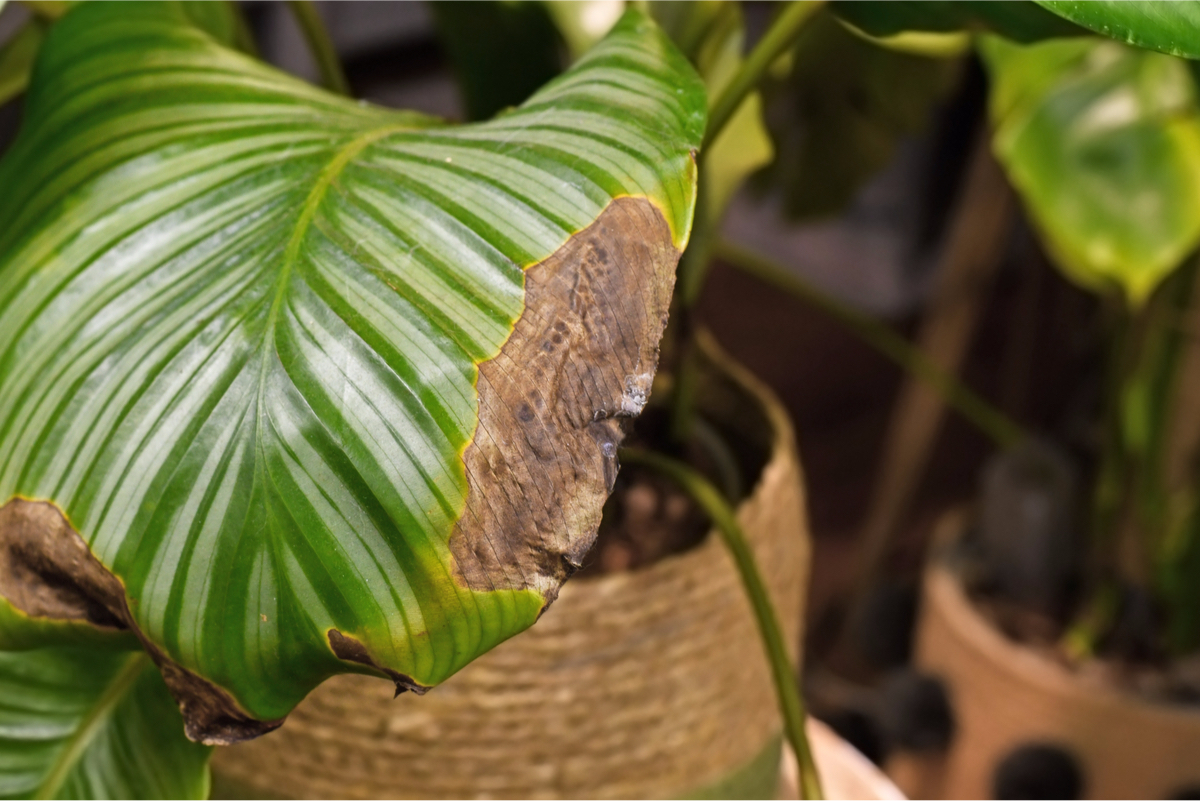
This kind of fertilizer is generally less likely to burn your plant’s roots or accumulate in the soil. In fact, some organic fertilizers and soil amendments are even formulated to contain beneficial fungi and bacteria that will improve your soil over time. Just ask Tracey, she’s always talking about beneficial mycorrhizae.
Again, choosing one over another is entirely a matter of personal preference.
But if it helps, think of it in terms of your plant getting a caffeine shot to pull an all-nighter (synthetic) versus your plant thriving thanks to a balanced diet and a healthy lifestyle (organic).
For organic fertilizer, the gold standard is the Organic Materials Review Institute (OMRI) certification in the United States, Canada and Mexico. Look for their seal to make sure you’re using a high-quality organic product.
How should I fertilize my houseplants?
That depends on what kind of fertilizer you prefer. Here are the main types of fertilizers and how to best apply them:
Liquid or powder fertilizers
These are mixed into the water that you use for your plants. These are easy to use and can be diluted to make light-concentration feed, which is especially important if your plant is in a very small pot or if you’re not sure whether your plant needs to be fertilized. Water-soluble fertilizers are generally quick-release, but that doesn’t necessarily mean that they’re synthetic. There are water-soluble organic houseplant fertilizers available.
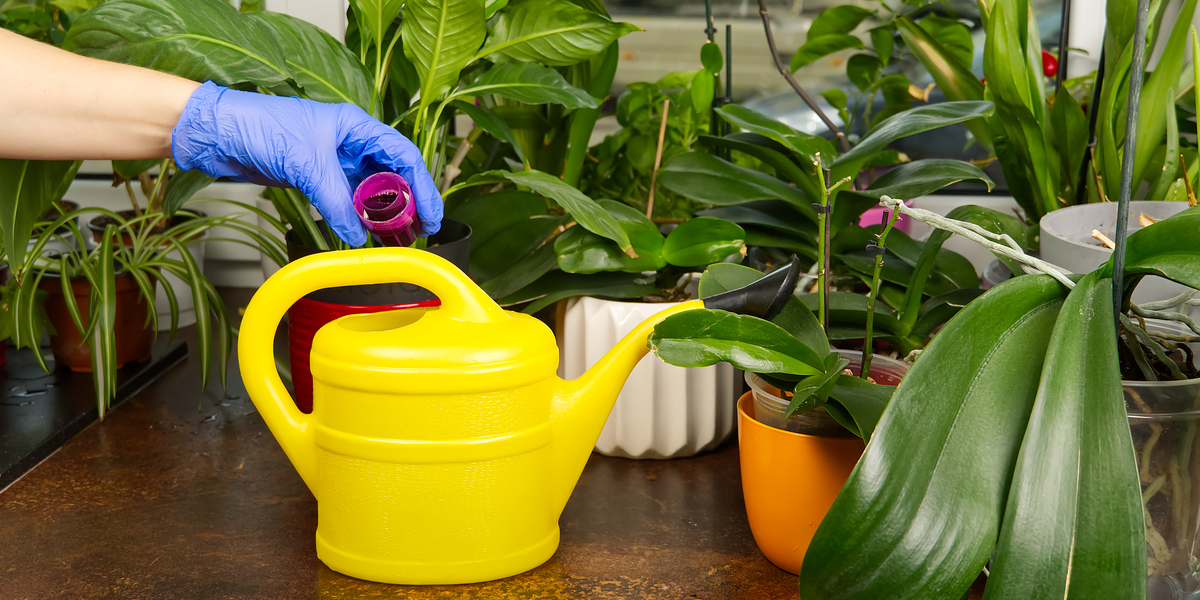
Granules or pellets
A slow-release type of fertilizer that needs to be mixed into the soil. The advantage of using granules is that they are very easy to apply and very hard to overapply (you can easily put some back in the bag, right?) They usually look like white or green spheres and are a very common sight in premixed bags of potting medium. The granules release fertilizer as the plants are watered, and they typically last from 3-6 months.
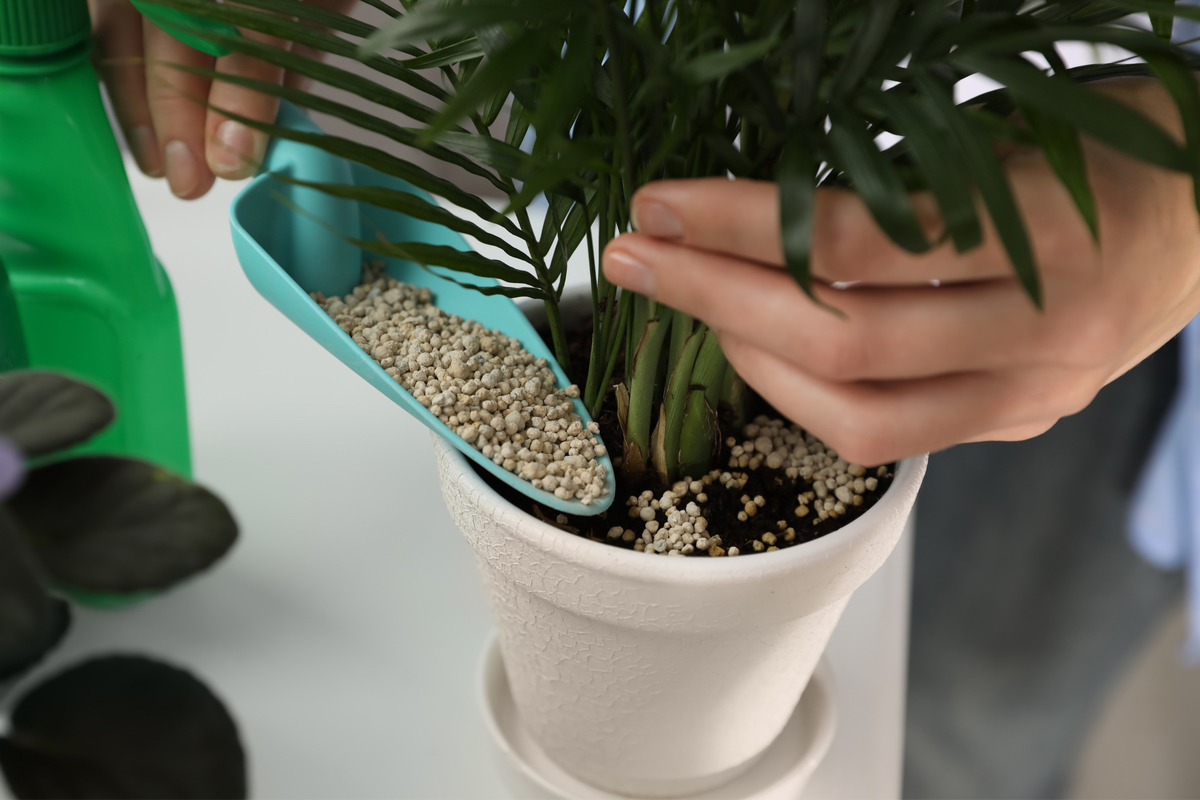
Stakes
Stakes are becoming a more popular type of houseplant fertilizer. The advantage of stakes is that they are slow-release and leave no mess behind. The disadvantage, however, is that as they dissolve, they may concentrate the fertilizer in one particular spot and potentially damage the roots underneath. If you use stakes, make sure you move them around the pot to avoid this problem.
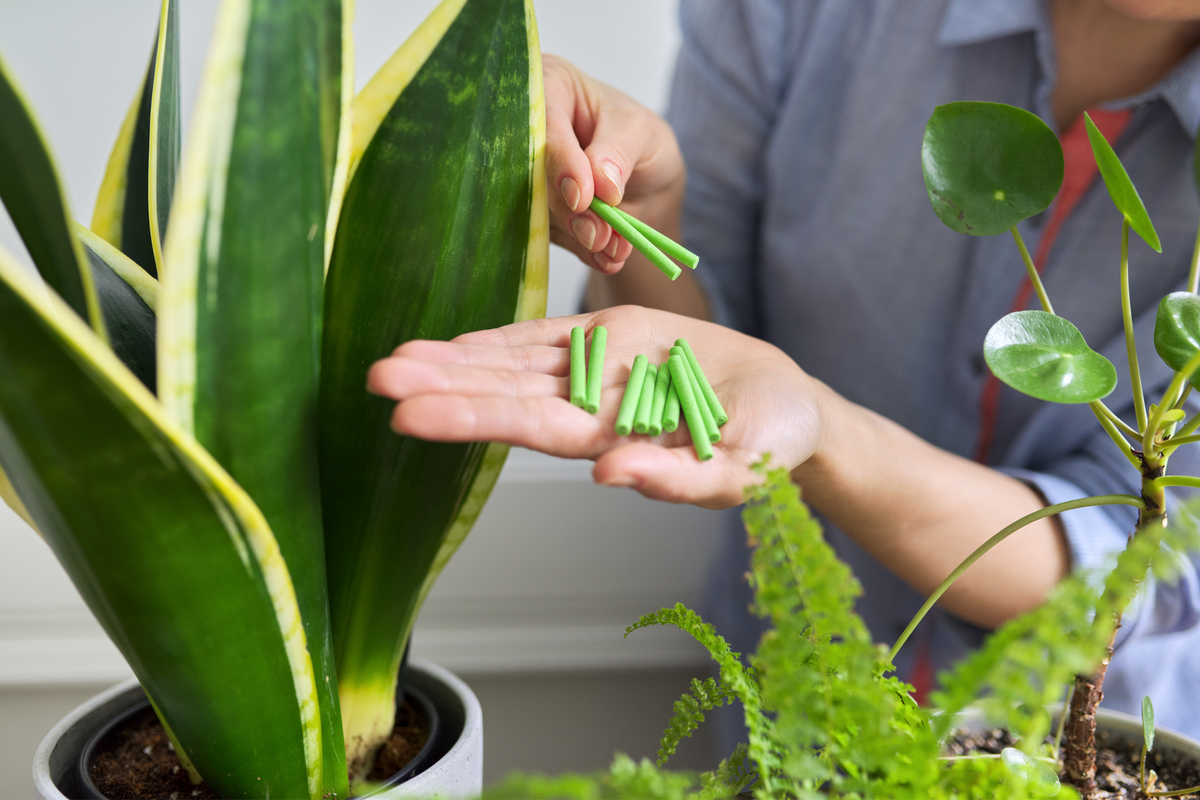
Foliar sprays
These are a novelty type of fertilizer that has been growing in popularity alongside the craze for air plants and bromeliads. The sprays can be applied directly to the leaves or the stem of the plant, for quick nutrient absorption. Sprays are specifically designed with a low concentration of nutrients, so as not to burn the leaves.
For better absorption, make sure the liquid reaches the underside of the leaves, where the stomata are located. In general, this type of fertilizer should be used as a temporary boost, not as a substitute for a healthy potting mix.
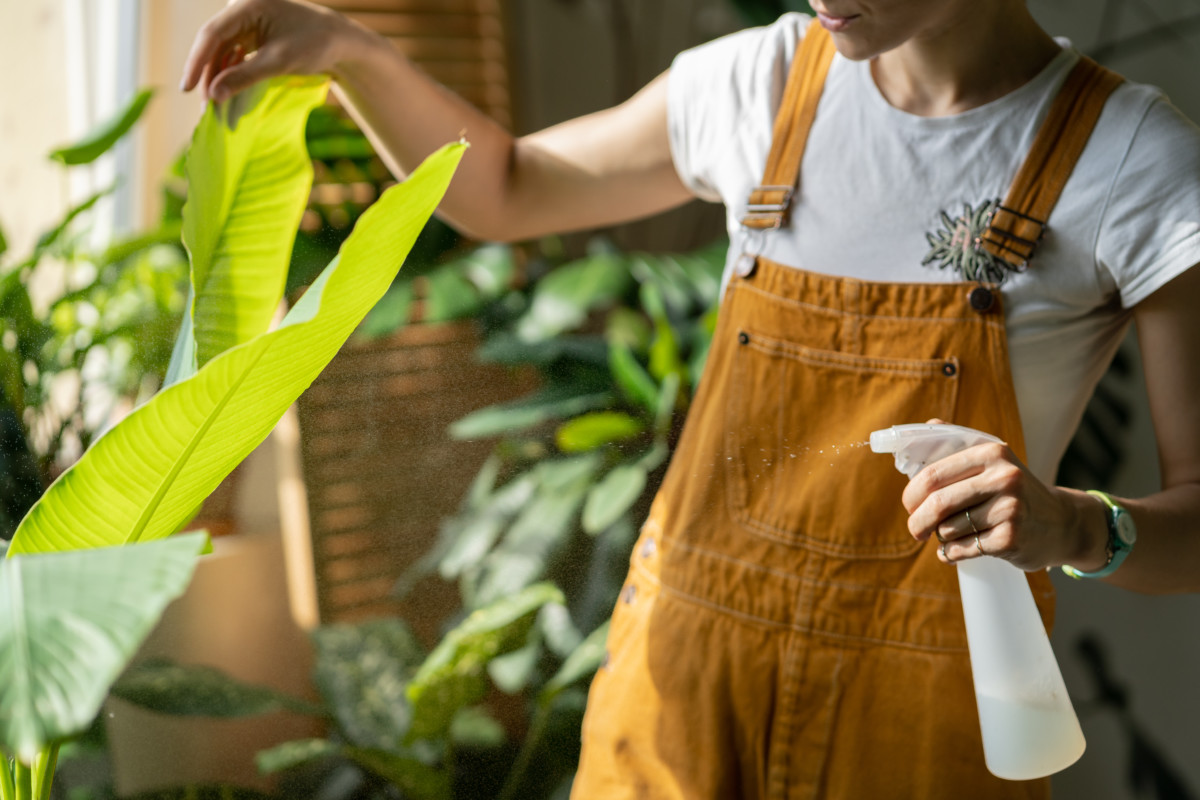
What are the signs that I need to fertilize my houseplants?
Fertilizing should not be done willy-nilly. The most common sign that your plants may need some fertilizer is a lack of growth in the summer (you know, when it’s supposed to grow).
Remember that for most tropical plants, slow growth or dormancy in the cold months is perfectly normal and part of their cycle. You should give your plant fertilizer when you notice that it’s not producing new foliage, but it’s quickly shedding the old foliage.
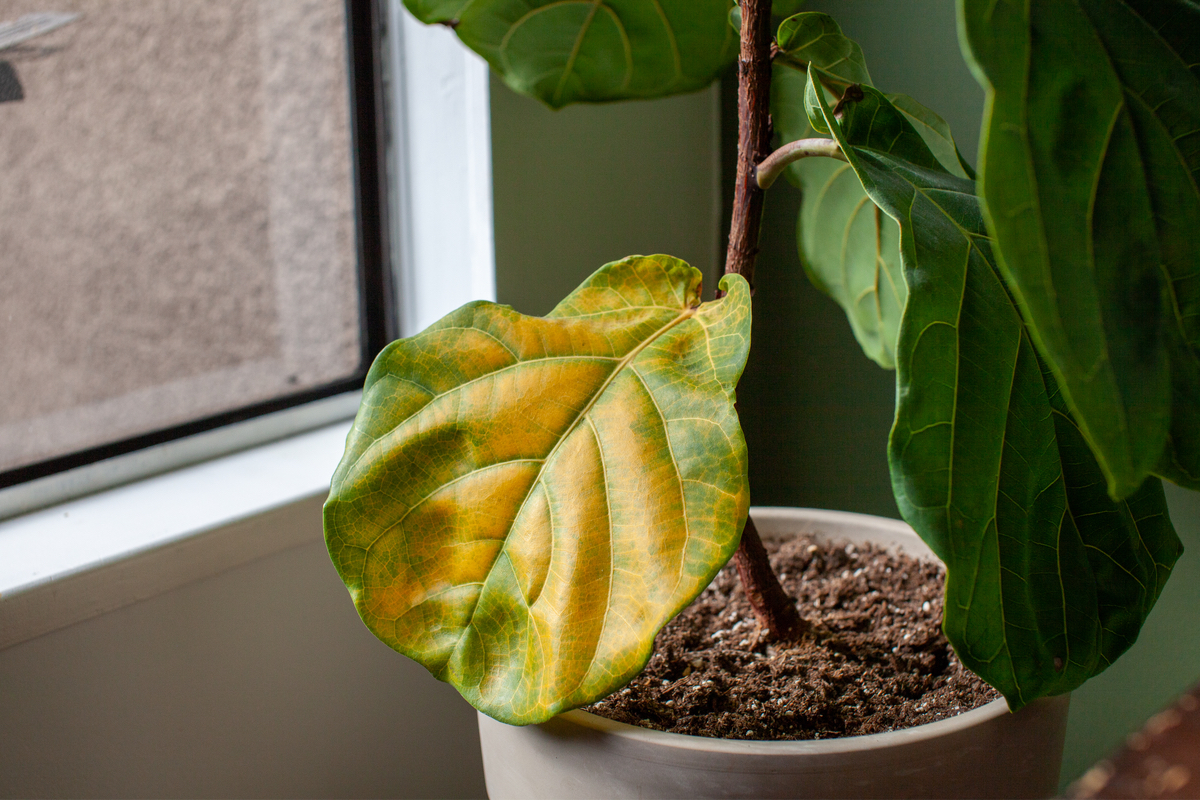
This is not an absolute scenario, of course, and you should tinker with other variables (such as its light environment and watering schedule) before you reach for that bottle of fertilizer. Just as a general rule of thumb, let fertilizing be the last step in your plant troubleshooting guide.
Another sign that your plant needs some extra nutrients is if its foliage turns yellow (especially yellow with veins that are still green). Of course, a leaf turning yellow and falling is part of a plant’s regular growth cycle, so no need to worry if that happens occasionally. However, if your houseplant is yellowing at a considerable speed, it may be due to a lack of nutrients. Or it may be something more serious, such as root rot.
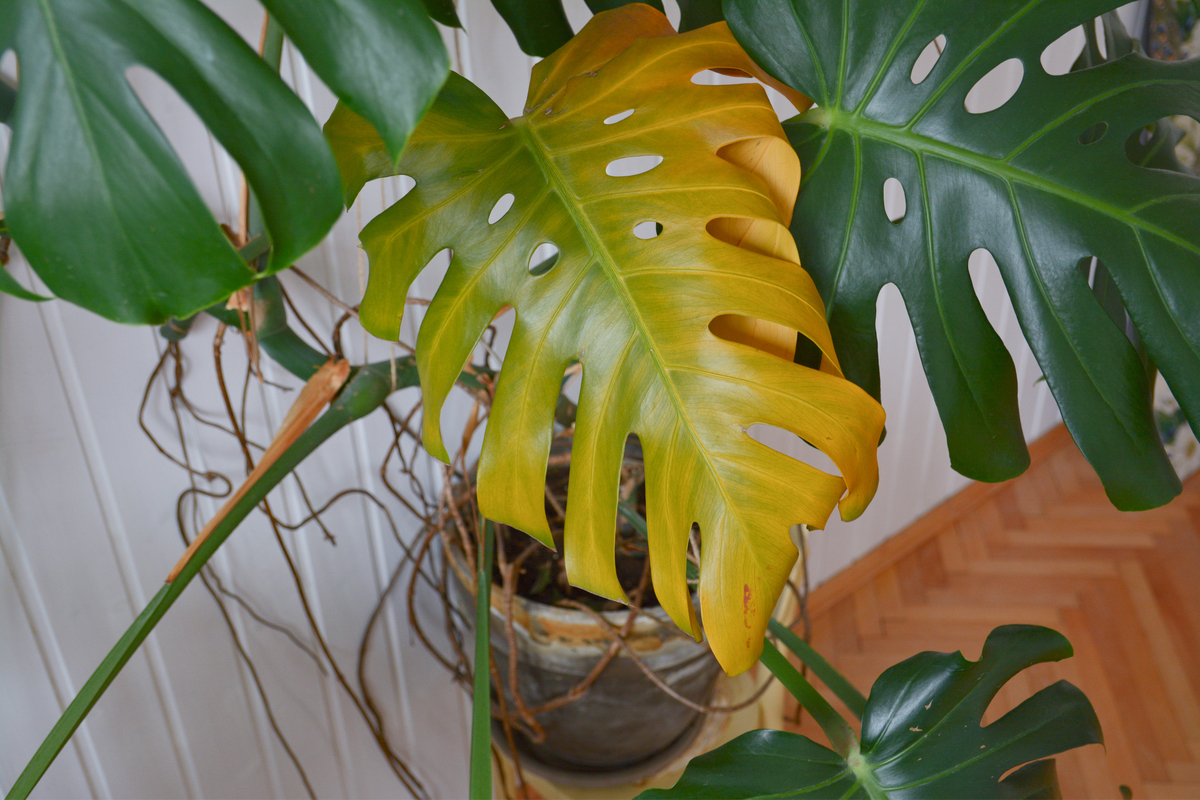
How often should I fertilize my houseplants?
Fertilizing your houseplants is more important during the active growing seasons, and for most climates that translates to spring and summer. So it’s not a matter of regularity year-round, but a matter of observing your plants and seeing what they need at a particular time (or even if they need to be fertilized at all).
For liquid fertilizer, you may have to do it every month, while for granules and stakes your timeline stretches to every couple of months.
Each fertilizer is different, so follow the instructions on the packaging to make sure your plant gets the right amount of feed. If in doubt, err on the side of under-fertilizing. The frequency of fertilizing in the growing season will depend on factors such as what kind of plants you’re feeding, what kind of pot the plant is in, how big your plant is and how fast it’s growing.
The size of the pot and the volume of soil in it. The lower the volume, the less plant feed you need.
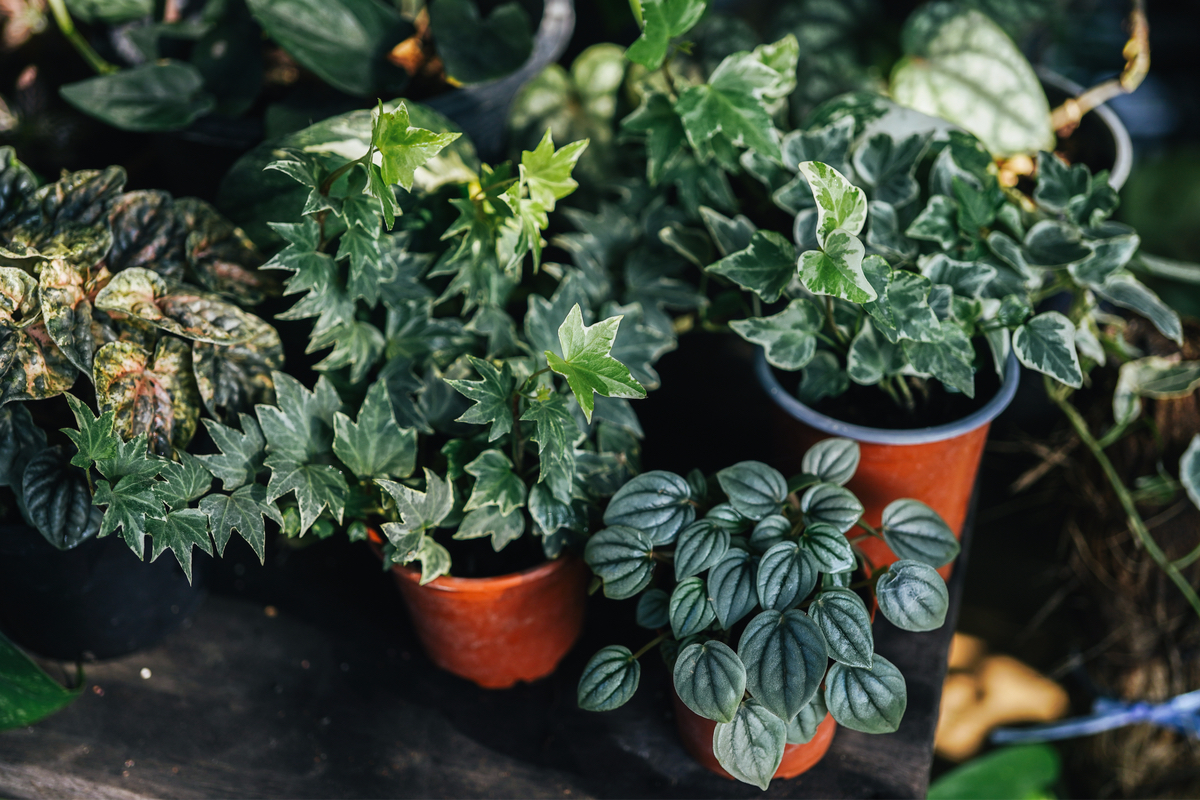
The amount of light your plant gets. The higher the light intensity, the faster your plant grows and the more feeding it needs.
The type of houseplant you’re feeding. Some plants (such as cacti, succulents and air plants) may only need one feeding session a year, if that. While other plants (such as monsteras, ficuses and foliage-rich plants that bloom) are more hungry.
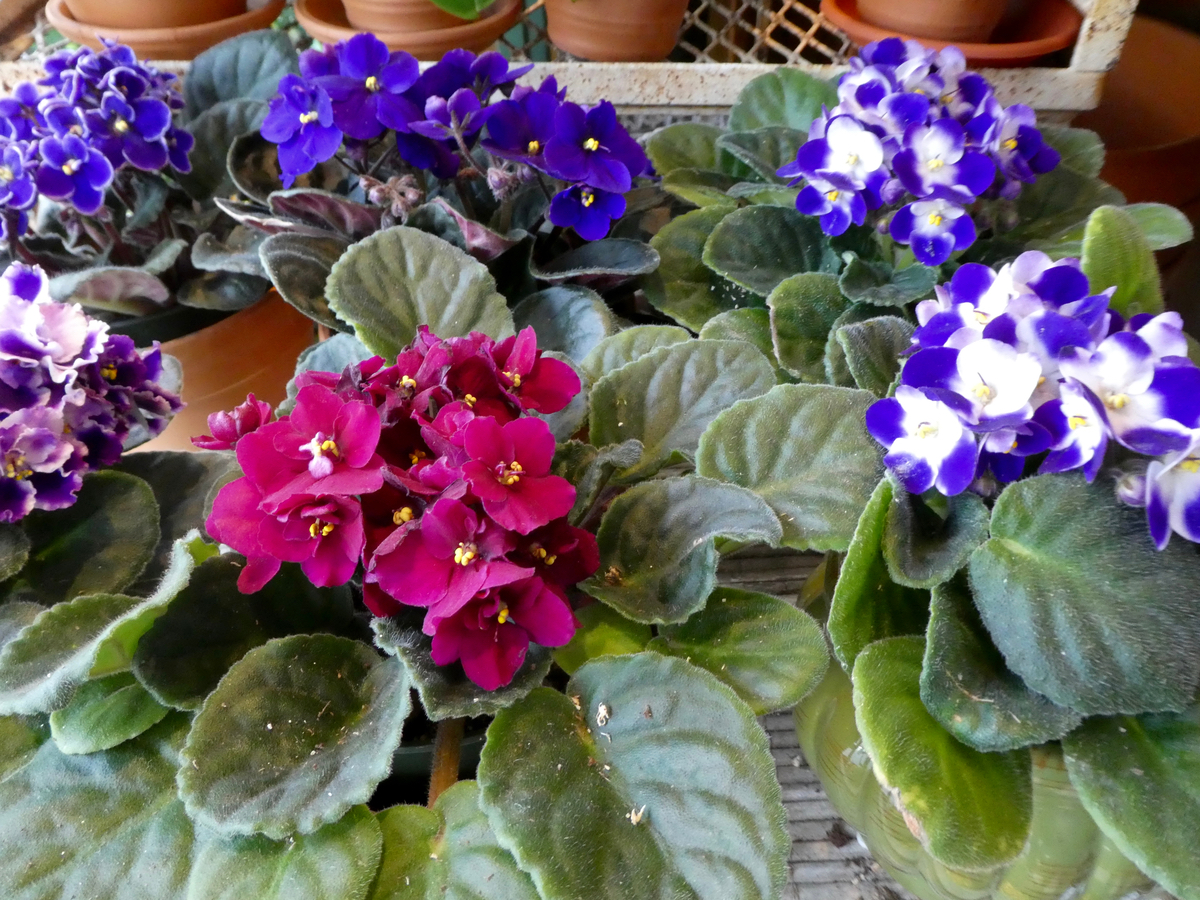
To be completely honest, for me, it also depends on lifestyle factors in my own day-to-day routine: how much time I have (especially in the summer when my garden is in full swing) and how well I keep track of my plant care.
Speaking of keeping track of fertilizing …
How can I keep track of fertilizing my houseplants?
If you’re absent-minded, overwhelmed, forgetful or busy (or all of the above) and your days and weeks just blur into one big time vortex, a plant journal will work wonders in keeping your plant care organized. This is especially true if you have a growing collection of green leafy friends.
In addition to noting down when you’re fertilizing, you can also track your watering routine, repotting dates and when you rotate your houseplants (you do remember to rotate your plants to help them grow straight, right?).
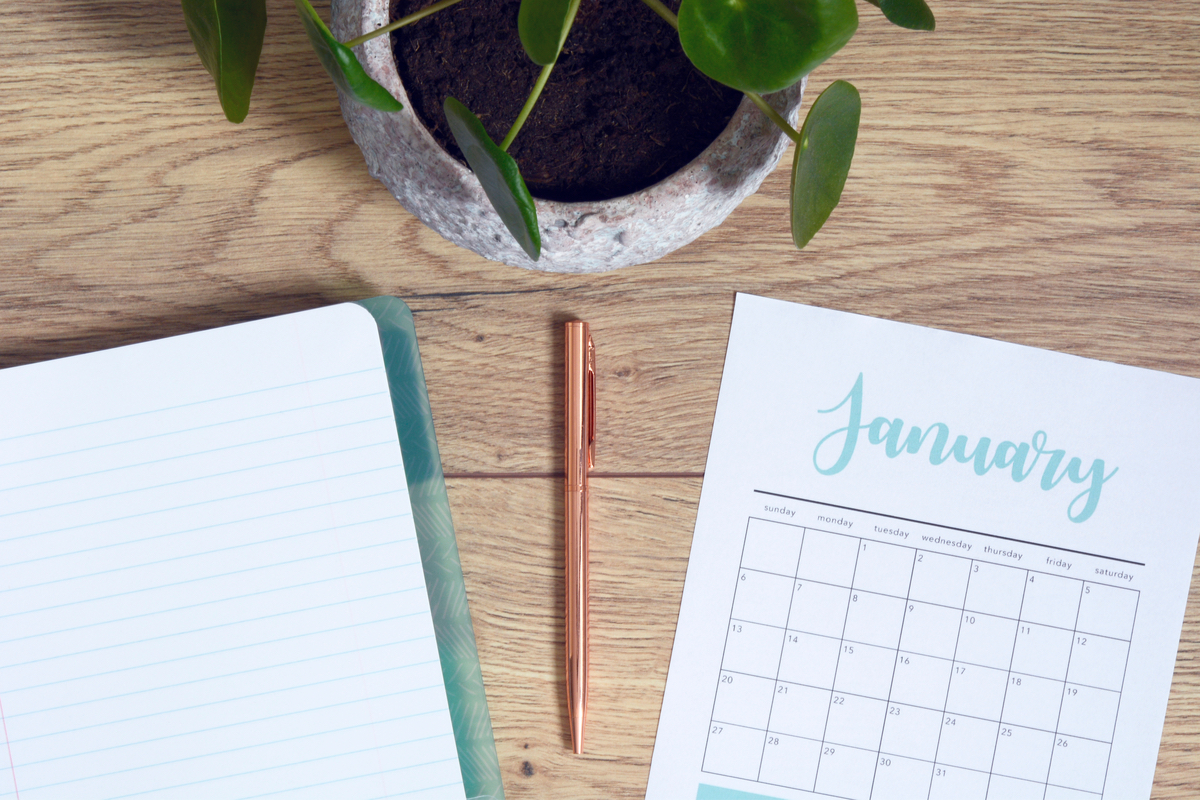
Keeping a plant fertilizing journal doesn’t have to be a complicated task. You can simply print a blank calendar (or use your daily planner) and write down the days when you feed your plants and a few other details, such as what kind of fertilizer you’re using, the brand of feed and when you bought it, the dosage and the effects or side-effects the fertilizer may have had on your plants.
This kind of logbook-style plant journaling can help you spot bad habit patterns early, hopefully before something goes wrong with your plant baby. Are you fertilizing too often? Are you overwatering your plants?
When shouldn’t I fertilize my houseplants?
In addition to the scenario that we mentioned above – don’t fertilize when the plant is slowing down its growth (i.e. when the days are short and cold) – there are a few other scenarios when you shouldn’t reach for that bottle of feed.
If you’ve just bought the plant.
Depending on when and where you buy your plants, the nursery or garden center would likely have been feeding them. After all, it’s in their best interest for plants to look lush and healthy enough to entice buyers. So it’s better to wait a couple of months before you feed a newly-bought plant.
If you’ve just repotted the plant.
Most premixed bags of potting soil already contain slow-release fertilizer that will last for 3-4 months after you’ve repotted your houseplant. Always check the bag for details.
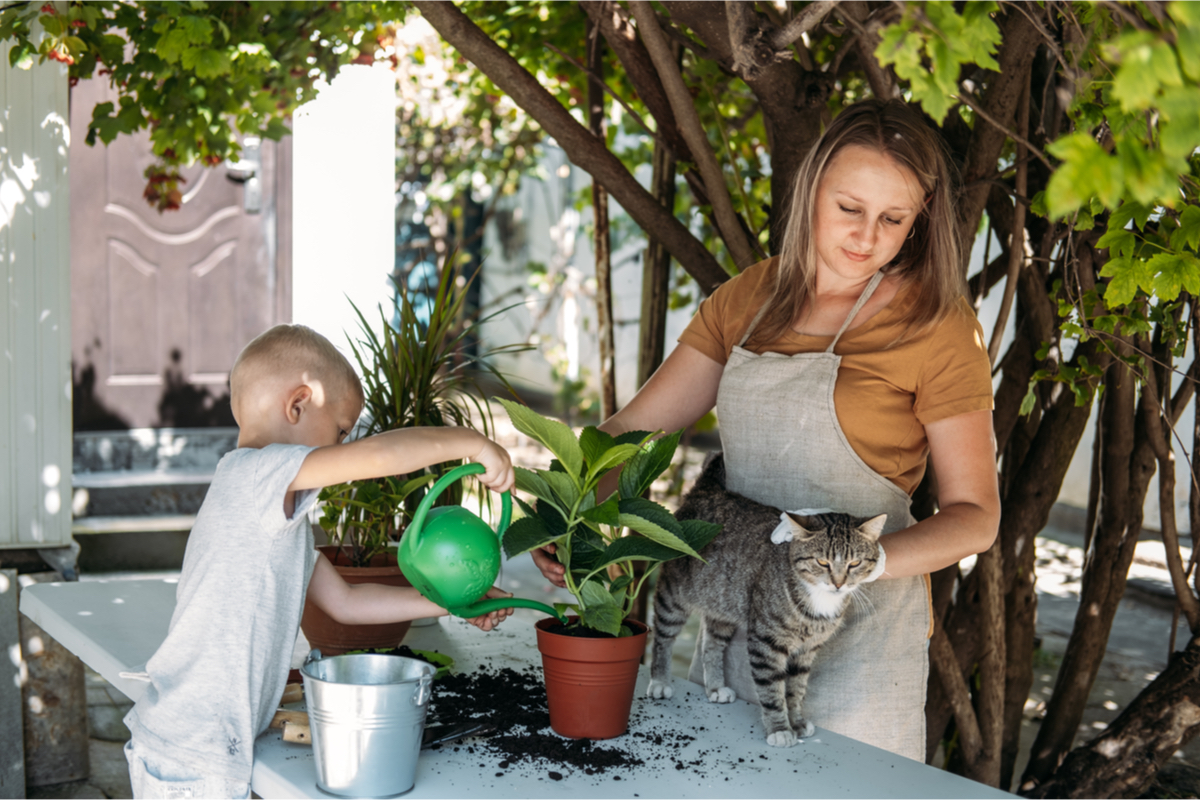
If the plant is sick or has been shocked.
I think it’s tempting to think of fertilizer as plant food (especially since we popularly call it “plant feed”). But it’s helpful to think of fertilizer as plant vitamins – an extra boost for extra growth. The real plant food is, in fact, the light that makes photosynthesis possible.
Oh, the temptation runs high to use fertilizer to fix any plant problem that may arise. But sometimes the last thing your plant needs is an extra boost of vitamins. For example, if your plant has been watered and suffers from root rot, fertilizer won’t fix that (on the contrary).
So if your plant is not doing well, fix the main problem first. Then once your houseplant has recovered, feel free to give it a boost.

What happens if I over-fertilize my houseplants?
There’s such a thing as too much of a good thing when it comes to fertilizing houseplants.
The most common sign of using too much fertilizer is “leaf burn.” Of course, we’re not talking about actual burn, but about a chemical burn. When you over-fertilize (either by applying too much at once or applying it repeatedly when it’s not needed), the water in the soil reaches such a high content of salt that it “burns” your plant’s roots by removing their water content.
Basically, the salt turns the roots into jerky. And there’s no recovery from burnt roots. Similarly, one of the most common problems associated with high salt levels is root rot, due to the root no longer being able to absorb nutrients and water.
This lack of water absorption will first be visible on the leaves, which turn brown starting at the tips. Other signs of excess salt in the soil include reduced growth, small leaves and an increase in bottom leaf loss.
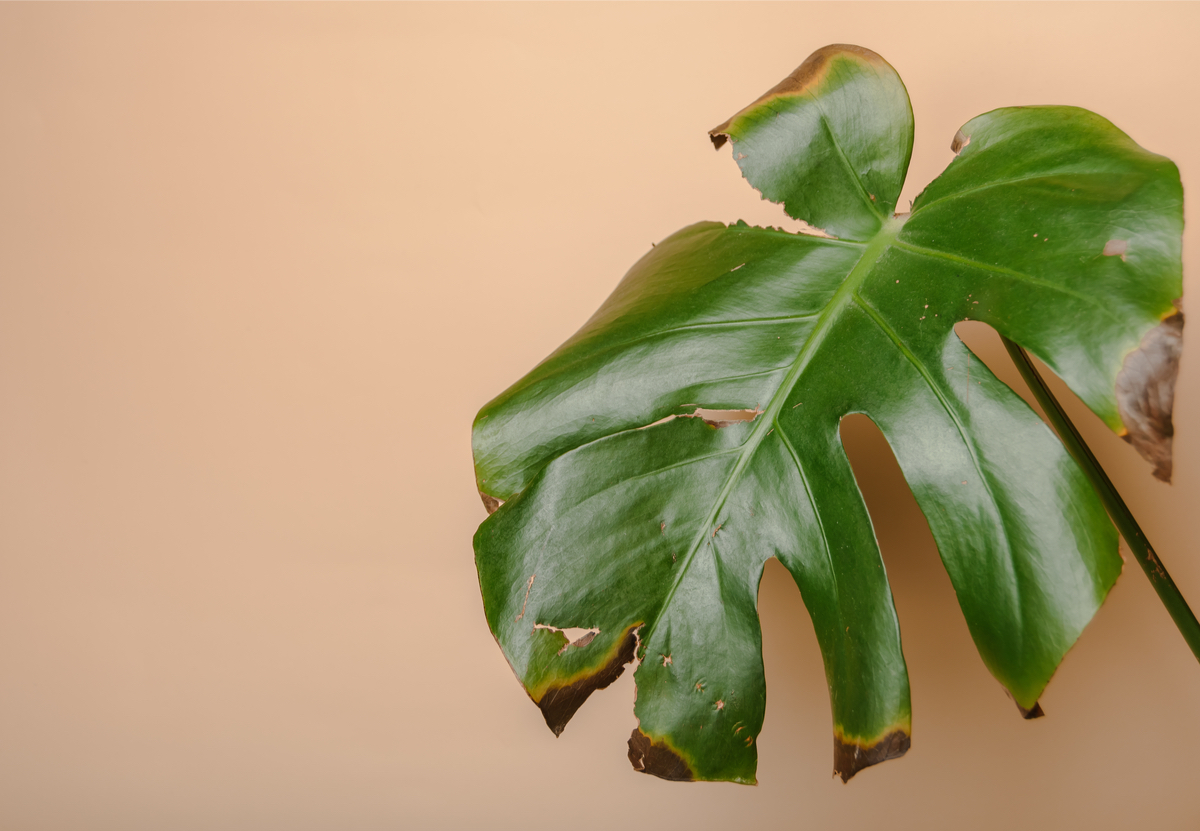
Another sign that you’re using too much fertilizer is a white or yellow powder or crust forming around the top rim of your container or around the drainage holes at the bottom of the pot.
If your plant is in a terracotta pot or an unglazed clay planter, you may notice excess salt buildup on the outside of the container. Again, this white powder is excess salt usually caused by over-fertilizing.
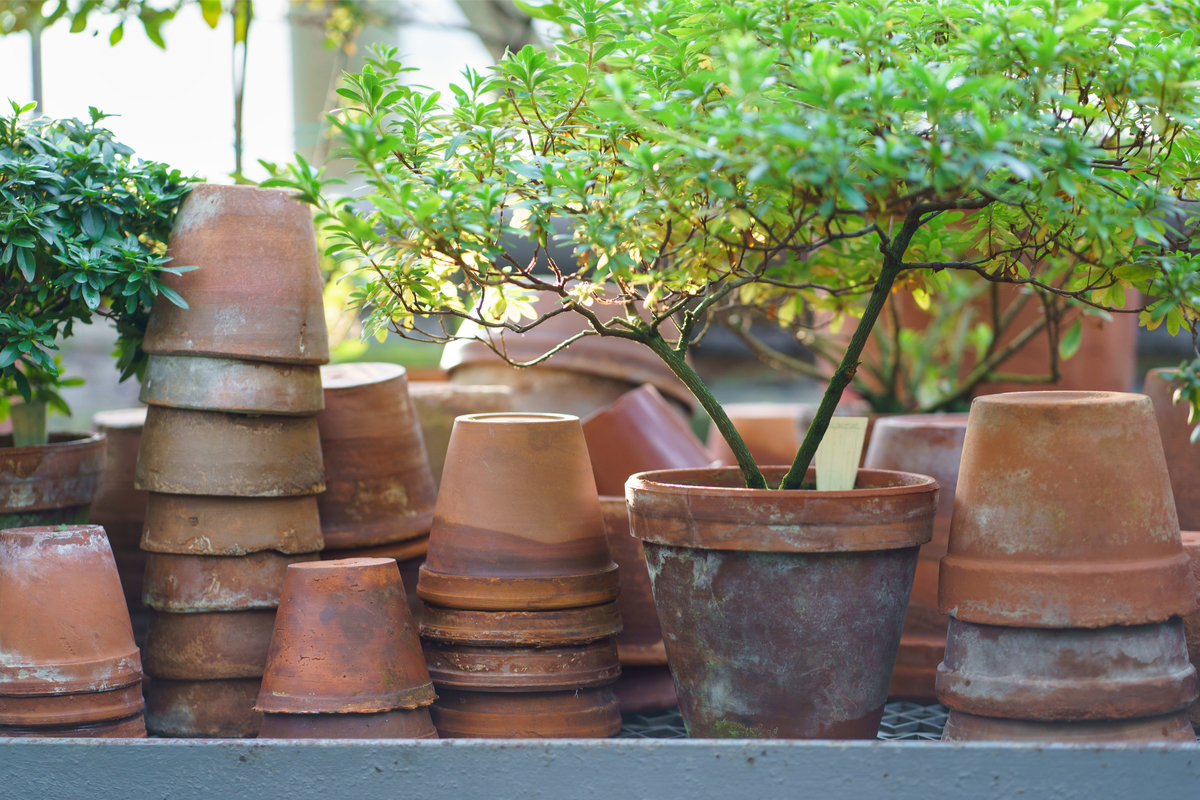
If this happens, the best remedy is to refresh the potting soil and adjust your fertilizing schedule. Once you’ve repotted your houseplant, you won’t need to fertilize it for at least three months (see above).
A third sign that you’re using too much houseplant fertilizer, and one that is often overlooked, is your houseplant growing very leggy very fast.
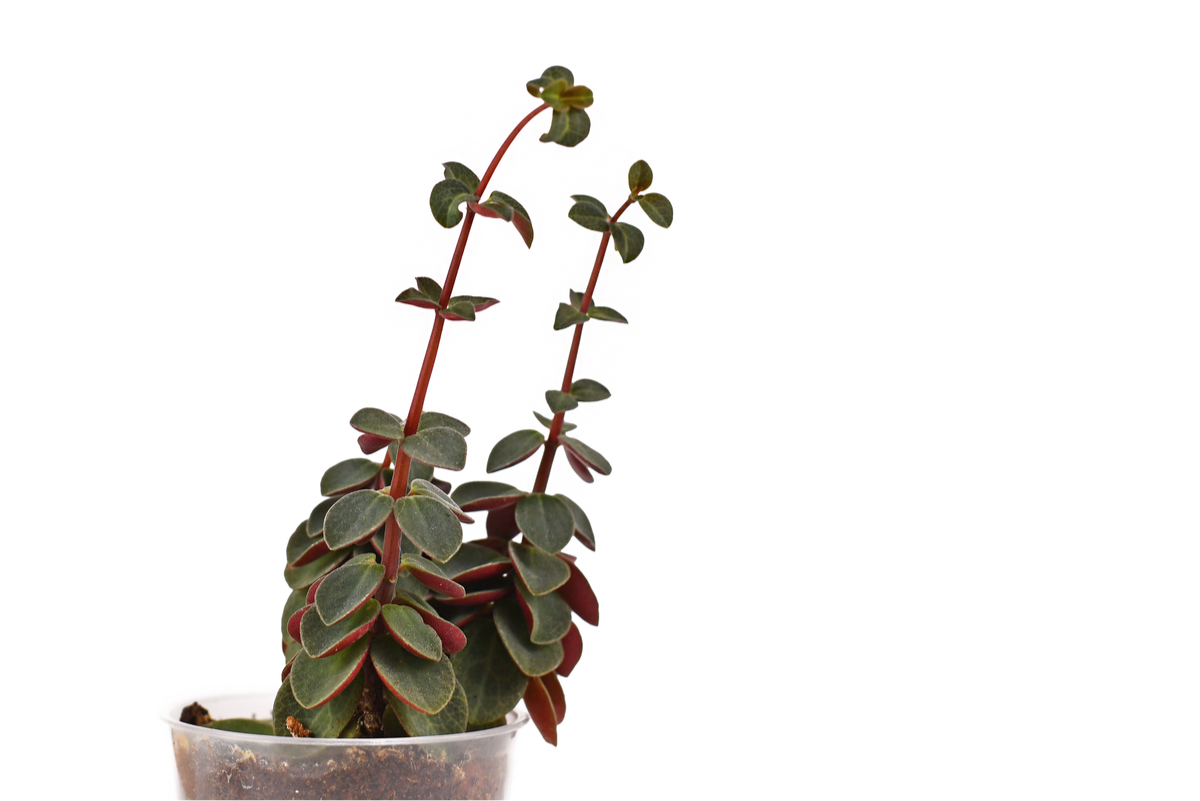
A leggy plant (called etiolated) is often a sign that a plant doesn’t get enough light. So in the process of reaching the light, the plant is stretching fast and becomes leggy. However, if your plant has plenty of natural light and you still notice the etiolation, then the reason might be that the plant is growing too fast for the leaves to keep up. When this happens, and the distance between leaf nodes on the stem increases, you should decrease your fertilizing.
In a nutshell, fertilizing is good for houseplants, but you shouldn’t overdo it. You’ll get the best results if you only increase the dosage and frequency of fertilizer to coincide with the growth of the plant. Small plants don’t need a lot of fertilizer until they grow. Similarly, plants that aren’t actively growing don’t need fertilizer.

Get the famous Rural Sprout newsletter delivered to your inbox.
Join the 50,000+ gardeners who get timely gardening tutorials, tips and tasks delivered direct to their inbox.

